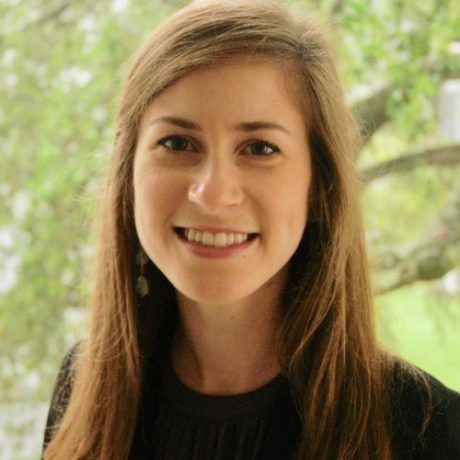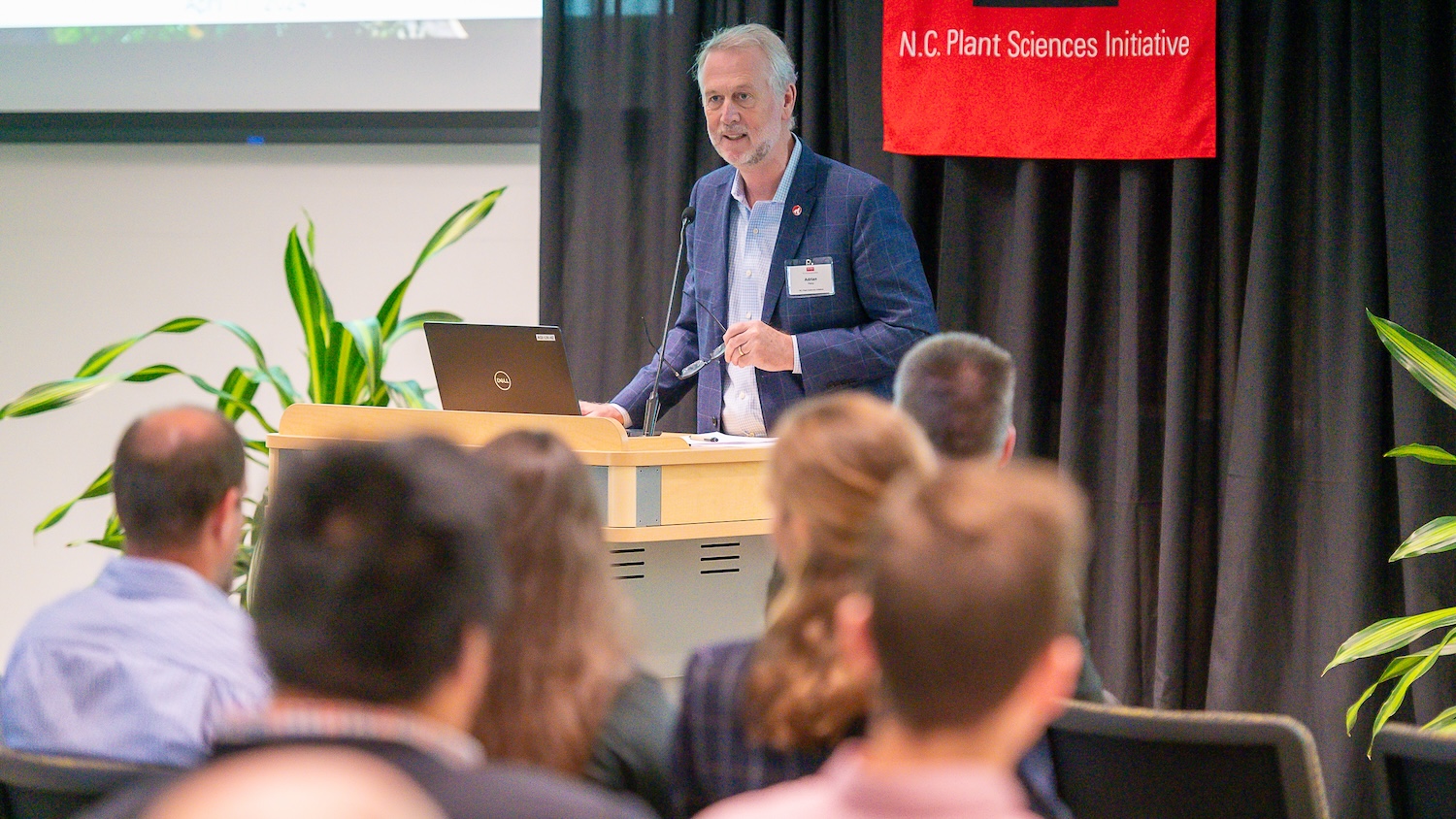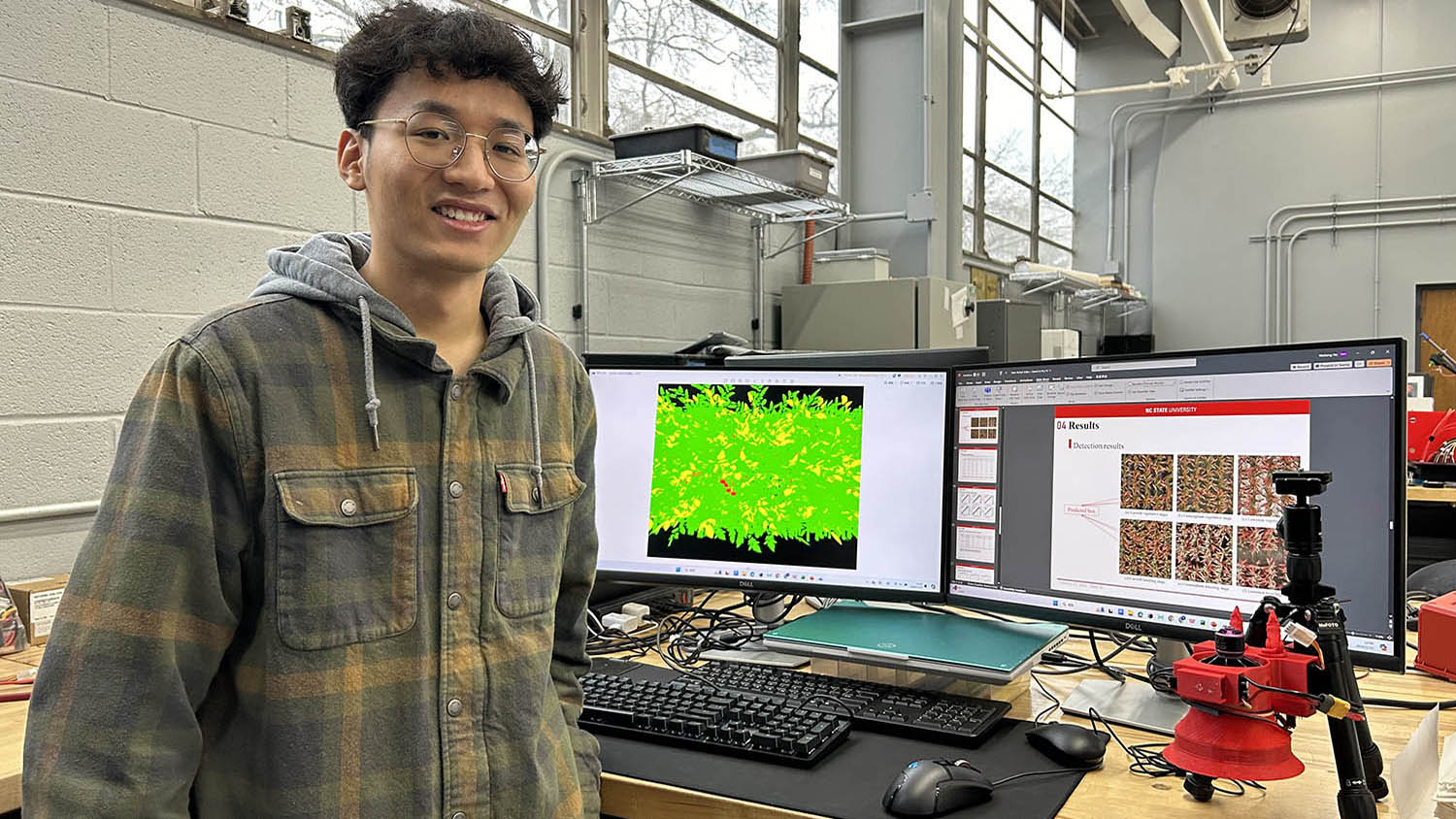Faculty Focus: Nelson Selected by USDA to Help Guide Agricultural Innovation

Natalie Nelson, an assistant professor in NC State’s Department of Biological and Agricultural Engineering was selected by the U.S. Department of Agriculture to serve as one of the 11 subject matter experts for the USDA’s Agriculture Innovation Agenda.
The Agriculture Innovation Agenda is an endeavor to develop a new research and innovation strategy that aligns academic and industry research. The ultimate goal of the agenda is to increase agricultural production by 40% and decrease the environmental impact of agriculture by 50% by 2050.
One of four areas of focus for the agenda is prescriptive intervention, or combining on-farm sensors with science-based management plans to produce proactive interventions to prevent crop or livestock loss.
This is the area Nelson is an expert in. Her research program focuses on data analytics and integrated models to inform agriculture, aquaculture, water and coastal resources management.
She recently received an early career research fellowship from the Gulf Research Program of the National Academies.
We talked with her to learn more about the Agriculture Innovation Agenda and her hopes for the future of agriculture
Why do you think the USDA selected you as one of the 11 subject matter experts from across the nation – from academia, the USDA and private companies?

I think they invited me based on a grant that I had received from the USDA Food and Agricultural Cyber Informatics and Tools Initiative. I was awarded that grant in 2019. The goal of that grant is to make machine learning methods more accessible to folks who are working in natural resources management. As part of the project, we’re developing tutorials that introduce data analysts and modelers to basic concepts related to using this machine learning.
I think I was invited to participate because of my involvement with machine learning approaches and use of diverse data types in agricultural and environmental management systems.
What does it mean to you to be recognized by the federal government for your excellence in this area?
I was very honored. I was flattered to be selected to be part of a group of people that includes many researchers who I really admire. For example, Jim Jones is a subject matter expert for the Systems-based Farm Management area, and he’s one of my favorite scientists. He was a faculty member at the University of Florida, who was a mentor for me.
Also, it’s exciting to be asked to think about how you envision the agricultural landscape and environmental sustainability changing over the next 10 years. It’s really exciting to be involved in that kind of thought leadership, where you can provide some perspective and share ideas that you’re excited about. And this might change the way the USDA funds research and ultimately impact what’s happening out in the world.
Can you tell us more about prescriptive interventions and how they can help us increase production while decreasing environmental impact?
Right now, when a grower is determining how they should change their management practices, let’s say for a particular field, they are typically going to be out in the field looking to see what the conditions are like and then based on their knowledge or information from their county Extension office, they might adapt their management plans.
The idea with prescriptive intervention is that you could have management plans that were developed specifically for your farm, your field or livestock barn. First, you would have different kinds of sensors that are deployed out in the field. And then based on the information coming in from those sensors, you could really have a prescription in terms of what the management plan should be for your specific field.
There’s a saying in precision agriculture about applying inputs in the right amount, at the right time, and in the right place. These inputs could be fertilizer application or pesticides. This practice reduces costs, could increase productivity and decrease the excess inputs that lead to environmental impacts, such as fertilizer that ends up in our waterways. My colleagues Jason Ward and Sierra Young are leading research programs in the use of robotics and sensors in support of precision ag.
You’re also a member of the Big Data for Better Sweetpotatoes GRIP4PSI project. How does that project relate to the Agriculture Innovation Agenda?
The sweetpotato project is really the research that’s needed in order to facilitate these new prescriptive interventions that will allow for increased productivity and decreased environmental impacts. We’re trying to integrate different kinds of data sets that have historically not been connected. We’re trying to understand how different cultural practices in the field impact the characteristics of the sweetpotatoes harvested.
You can only design precision ag systems if you understand what these different kinds of thresholds and limits are, for example, the nutrient requirements of the crops. In the case of sweetpotatoes, for example, we know that different rates of nitrogen application can lead to very different shaped sweetpotatoes.
How do you see agriculture changing in the next 10 years, or hope to see it change?
I think this idea of data science Extension is an area that’s really exciting and I think we’ll see a lot of growth in that area in the future. How can we better use data to inform decision-making? How can we help to educate others? What kinds of potential is locked up in data that we could potentially unleash if we use different types of analytics?
I think there are cool ways that Extension could support people in developing the tools that would allow for them to make better use of their data. I’m excited that there’s been more discussion on the role of data and analytics and how it can be a mechanism through which we can empower growers to better harness their data to inform their own management practices.
Our faculty Think and Do the Extraordinary every day.
- Categories:


